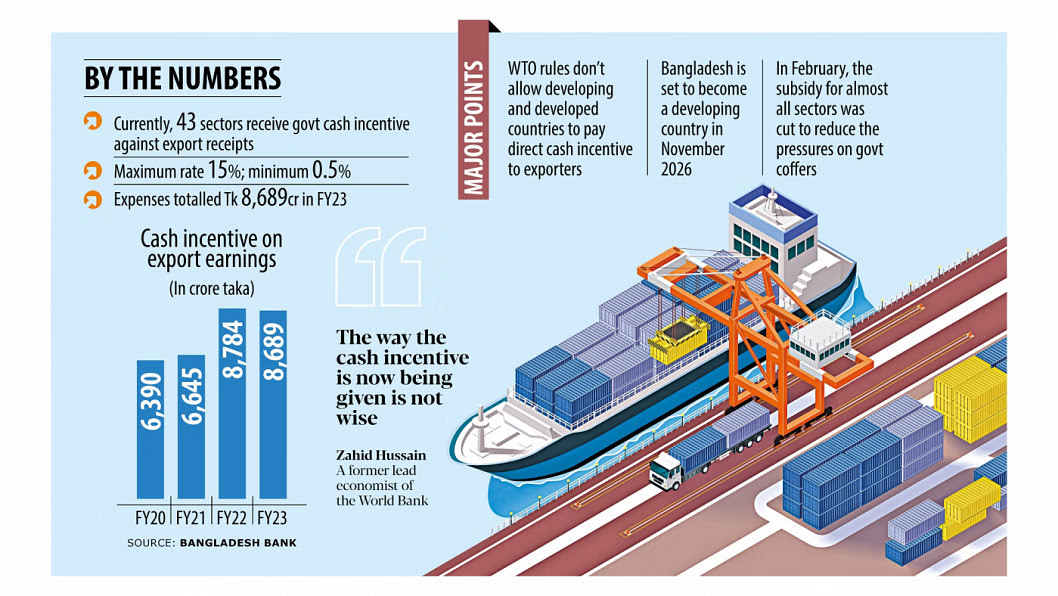According to the Export Promotion Bureau, the promising sector experienced a negative growth of 29.34% to $940.8 million in the July-April period of FY2022-23, down from $1.33 billion in the same period the previous fiscal year.
The optimism that the home textile businesses carried for more than two years is fading as it has failed to fulfill expectations for a few months.
The sector has gradually veered off course as a result of a significant drop in demand caused by inflationary pressures, the implications of the current Ukraine-Russia war, and worldwide consumers’ reduced spending power.
According to the Export Promotion Bureau, the promising sector experienced a negative growth of 29.34% to $940.8 million in the July-April period of FY2022-23, down from $1.33 billion in the same period the previous fiscal year.
The aim for this sector for the mentioned time was $1.61 billion, which was 41.75% lower than the target, as per EPB data.
Industry insiders say that in addition to global difficulties, internal issues such as a nearly 179% increase in gas prices, a foreign reserve crisis and interruptions in power and energy supplies all had an influence on the sector’s productivity.

Momtex has a monthly capacity of six million meters and 7500 employees. H&M, Linen House, KAS, OTTTO, Walmart and many others are among their global customers.
According to Shahjada Rubel, Momtex’s head of business, their gas bill has climbed by 8.5% and their entire production costs have grown by more than 15%.
“A number of orders started shifting from China, but due to high production costs, we can’t hold them. Now they are moving to Pakistan as production costs are lower there,” he added.
He also said that due to the reserve crunch, banks are discouraged to open LC which also impacts exports.
“The Russia-Ukraine war has shaped global consumer behaviour in a new way. Their buying capacity has curtailed as they are spending more on foods and other essentials due to inflationary pressure,” he added.
To combat inflationary pressures, purchasers’ countries’ banks are raising lending rates, which is influencing their consumers’ behavior, he noted.
“In these circumstances, we need governmental support, especially in the uninterrupted supply of power and energy,” he added.
A senior official of Zaber and Zubair told Dhaka Tribune that due to the ongoing economic turmoil, the purchasing capacity of the people of the buyers’ country was curtailed.
“Who had purchased four units now purchases only two. Moreover, throughout the pandemic, many stayed at home, affecting the market for home textiles,” he added.
However, once normalcy returned, individuals began to venture outside due to economic activity, which reduced demand and resulted in a large supply for purchasers.
M Shahadat Hossain Sohel, chairman of the Bangladesh Terry Towel and Linen Manufacturers and Exporters Association, told the Dhaka Tribune that disruptions in gas and electricity supply are on the rise.
He also stated that they are paying more for gas and electricity, but supply problems continue.
“Moreover, the issues of customs, income tax and corporate tax are still unsolved which has declined the competitiveness of our manufacturers,” he added.
Regarding the latest Hemtextil Frankfurt, he said that they didn’t get the expected response as the whole world is passing through a crisis.
“The Ukraine-Russia war has changed the whole world and crises persist in all sectors including food, coal, gas, oil etc. We can’t say anything unless the war ends,” he added.
However, the fact that the west is moving away from China, Vietnam and Pakistan. There is no other option but Bangladesh.
“If the war situation improves by the end of this year, the sector will rebound from 2024,” he added.
Regarding the national poll, he said that domestic political stability is also a must for surviving any business and many political parties will consider this.
Industry insiders said that home textile is one of the first-line export sectors of the county, which includes bed linen, bed sheets, bath linen, carpets and rugs, blankets, kitchen linen, curtains, cushions and cushion cover, covers for quilts and other bedroom textiles.
Bangladesh entered the market of home textiles in the 1980s and now the name Bangladesh has also been added to the list of the top home textile-producing countries, said the industry insiders.
In the last fiscal year, the sector bagged $1.62 billion, fetching a growth of 43.28% in FY22 against $1.13 billion in FY21, EPB data showed.
















